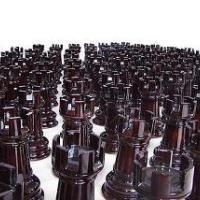
Converting Material Advantages Part 3
Hi Again,
Today will be the third part of my series on converting a material advantage. In the first one, we looked at how to teach a lesson about winning when you are a queen up. In the second, we saw a lesson about winning with an extra rook; this time we will see how to win with an extra knight.
A queen is worth more than a rook, and a rook more than a knight. So obviously, with each lesson exploiting the material advantage has gotten more challenging. Nevertheless, winning with any of these "leads" in material is simple for an experienced tournament player, and knowing how to do so is crucial for success. All the tactics and positional knowledge in the world won't help you if you can't win when you are up!
Start with this position, a basic position where White has an extra knight:
To be honest, it would be quite wierd for such a position to be reached in tournament play. Normally by the time such a material balance would be reached, some pawns would be traded off, or at least moved. But that is not really important - by using such a position I just wanted to remove all "impure" elements (i.e. other factors which might give White some advantage beyond the extra material).
The presence of so many pawns means that White has to create a plan to use his extra force, to break into Black's position. Just as in the lessons with the queen and the rook, the goal is first to win a pawn or two, create a passed pawn, and queen it. Then checkmate will be easy. But how do we break into the black fortress and gain a pawn? With the queen it was easy, but with only a knight up, it will be a bit more tricky.
A good plan would be as follows:
1. Centralize the king and knight, moving them forward to strong positions.
2. Using the knight and pawns, try to "punch a hole" in Black's pawn structure, to create a weakness.
3. Do not be afraid to trade a few pawns, to clear space for the knight to invade. But (be sure to emphasize this) White must be careful not to trade too many pawns! This is the main danger, since a knight cannot checkmate on its own.
4. Attack a pawn which has been immobilized, winning it.
5. Create a passed pawn in the missing black pawn's wake and queen it, perhaps with the help of the king or knight.
6. The final checkmate.
Now, let's see how this might look. Keep in mind that there are an almost infinite number of ways to win this position. Let the children suggest White's moves, try to play the best defense for Black, and only reject their moves if they are blunders or if they are not following a plan. You can allow them to suggest some aimless moves for a while, until they see that White is not making progress; then take back the moves and ask "how could White play better?'
Here is an example of how play might go:
Of course, I don't claim that this is the absolute fastest way. There are nearly an infinite number of ways to win, and probably even the strongest computer could not find the fastest way! But that is not important. All that is important is that White continue to follow a plan, making progress all the time and not making any tactical errors that lose something.
Knowing how to exploit a material advantage is crucial knowledge for chess players of every level. If you are teaching a private student, it would be a good idea to practice the above example over the course of several lessons (for example, before starting other subjects, let the student try to beat you from the above position until he/she can do so easily). After that, you can move on to more complicated examples of winning with extra material. For example, White is up a queen but there are also many other pieces on the board. Or up a rook, etc. For such situations, be sure to teach the number one rule of exploiting a material advantage: "When you are up, trade pieces (not pawns!)"
Have fun teaching chess!







